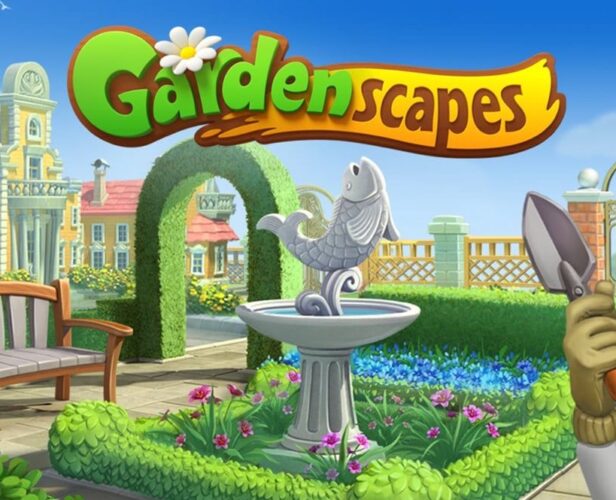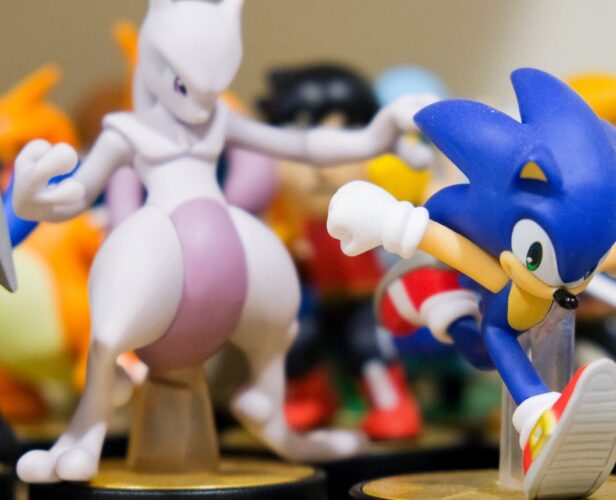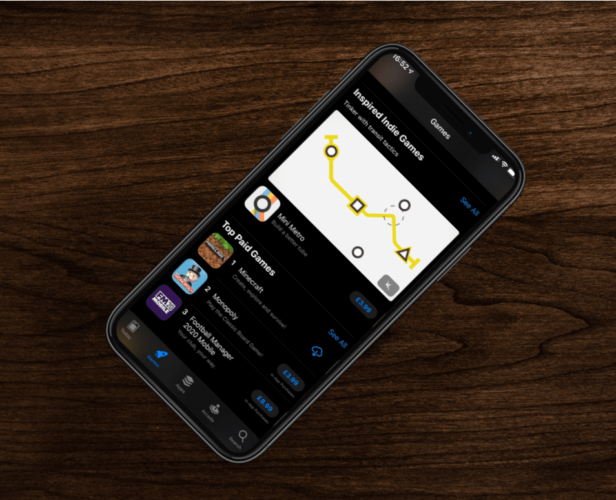Category
Marketing & Publishing
#Marketing & Publishing
Hyper-Casual in 2021: What to Expect in Eastern and Western Markets
Hyper-casual games boomed in 2020. With so many of us confined to our homes, the mobile gaming industry saw a peak worldwide – especially in the Chinese, Indian and Brazilian markets. During the lockdowns, active users went up 200%. The average length of gaming sessions went up 20%. And hyper-casual games alone generated 1bn monthly downloads. Can these numbers remain so high? Could they go even higher? Here’s what we’re expecting to see in the market in 2021. IDFA changes will affect hyper-casual the least While IDFA still remains a question mark, the iOS changes seem unlikely to affect hyper-casual games directly. This is because the hyper-casual genre has a broader audience than other categories and targets users differently. Meanwhile, ad money could prove to be an issue due to other genres like mid-core games getting hit with the IDFA...
#Guides
How to Create a Press Kit for Your Mobile Game (and Why You Really Should)
If you’re a mobile game developer, you want the press to talk about your game. It’s free advertising, and who wouldn’t want that? Creating a press kit is how you make it easy for the press to talk about your game, and to show it in its most positive light. If you previously thought ‘press kit’ was something you asked your dry cleaners to do after a football game, this blog’s for you. Here’s a quick introduction to press kits – how to create them and put them to use. What is a press kit? It’s a collection of text and visuals that gives a journalist or website everything they need to write about your game. You’re basically saying to them: “Oh, you want a game to write about? Well, you won’t need any research to write about my game...
#Marketing & Publishing
Words Matter – How to Write Compelling Copy to Sell Your Game
You might think that the most important part of being a game developer is, well, developing games. But you also need to be a writer. I’m not just talking about the words that appear in your game (although obviously those are really important) – you’ll also need to create copy for the app store description, patch updates, user interfaces… the list goes on. And the best publishers also have writing that supports their game. So that’s things like website content, press releases, and promotional material, for example, blogs and newsletters. The short version is that your writing is one of the best selling tools you have in your arsenal – eye-catching, well-written copy could be the difference between people downloading your game, or ignoring it and moving onto the next one. Don’t panic Before you run away shouting ‘But I’m...
#Marketing & Publishing
Everything You Need to Know About Social Media Marketing Memes
Editor’s note: This article was originally published by Tiahn Wetzler, Senior Content Marketing Editor at Adjust. You can check out the original here. Social media memes are a smart way to engage your audience, create stronger brand recognition and acquire new followers. As a form of native social media content, they can create a positive brand image through humor and relatability. However, there are several pitfalls to avoid and essential practices marketers need to follow to successfully leverage the format’s popularity with younger audiences. This guide breaks down everything you need to know about social media marketing memes and how to incorporate memes into your social media strategy. Where to begin: What is a meme? The term ‘meme’ was coined by biologist Richard Dawkins in his 1976 book, The Selfish Gene. This was defined as a behavioral or stylistic trend...
#Ads & Monetization
The Metrics That Make for a Great Match 3 Game – And How to Reach Them
The match 3 genre has given us some of the most successful, long-running games of all time. With Benchmarks+ we can see what metrics make the best match 3 games successful. We recently updated our Benchmarks+ tool to include 25 sub-genres – one of which is ‘match 3 puzzle’. So now that we can see this classic, much-loved sub-genre in all its multi-metric magnificence, let’s take a look at what a successful match 3 game looks like. To start with: what is a match 3 game? Pretty much any game that challenges you to put matching objects together can be classified as a match 3 game. They started back in the eighties, with games like Tetris, Chain Shot! and Puzznic. In the 2000s, there was Candy Crush and Bejeweled Blitz. And more recently, there are popular titles like Ticket to...
#Ads & Monetization
Part 2: How to Land a Licensed IP for Your Mobile Game
If you had a chance to read part 1 of our licensed IP series, you should be pretty familiar with the basics when it comes to licensed IPs (if you’re not, we recommend navigating back to part 1 before reading on). With the fundamentals of IP law out of the way, we can start reaching out to IP holders. It’s actually pretty straightforward, though you should probably make sure you’ve got a lawyer to check over any contracts. So, what do you need to do first? Find the right fit Before you rush off and start hitting up every huge franchise for a chance to use their IP, you’ll want to make sure you’re the right fit. There are three questions to ask yourself: Do my mechanics work with this IP? If you’re making a racing game, will it really...
#Ads & Monetization
Part 1: The Pros and Cons of Using a licensed IP
There are a lot of reasons to use a licensed IP. You could have made a game and now want to reskin and update it to reach a new audience, like Reigns: Game of Thrones or the new Angry Birds: Star Wars. You might be making a music game and need the rights to use a few songs, like Guitar Hero. Or perhaps you just want to include a single character in your brawler, like Super Smash Bros. Whenever you’re using another creator’s content, you’ll need permission. A license. But what are the pros and cons of doing that? Does it really help? The short answer is: maybe. But it’s a lot of work. We can’t get into all the nitty-gritty here, but we can cover the basics and give you a few tips to make sure you don’t fall...
#Marketing & Publishing
How to Use Collectibles in Mobile Games to Keep Players Coming Back
It’s easy to think of collectibles as frivolous add-ons to mobile games, and games in general. But when you get them right, collectibles can make your game more enjoyable, more sustainable, and more lucrative. Here’s a rundown of the key things to consider when you integrate collectibles into your game. What do we mean by collectibles? There are many different ways you can use the term. But let’s go with this as a general definition: Any bits of content that aren’t essential to progression through your game. That’s pretty broad. But it needs to be. Collectibles can include any of these things (and many more): Cosmetic items, like skins Heroes and characters Upgrades and power-ups Resources Achievements Informative items that expand your game’s lore Playful items that bring an amusing surprise In this blog, we’ve covered a few reasons why...
#Guides
Your 101 guide to email marketing to mobile apps
Email marketing is a critical part of a healthy overall marketing strategy. A study by the UK-based Direct Marketing Association (DMA) found that for every £1 you spend on email marketing, you can expect a return of £42. Additionally, Statista found that 49% of consumers like receiving weekly promotional emails from their favorite brands. But there are some common mistakes to avoid when adopting email marketing. In this guide to email marketing for mobile applications, we are going to: Define what email marketing means for mobile applications Discover why email marketing is important Outline how to build your email marketing strategy Share best practices for marketing your mobile apps via email What is an email marketing strategy? Marketing emails can be used to send regular newsletters, essential updates, and promotional offers to your users. You can be hugely successful at...
#ASO
7 ways to optimize your mobile game on the app stores
“One does not simply hit the top of the app stores” – Boromir, Lord of ASO. Seriously though. Getting your game noticed on the app stores is no easy feat. Just like websites have SEO (search engine optimization), app stores have ASO (app store optimization). So I thought it best to ask some of the industry experts. I took the time to talk to a bunch of different developers, some with games on the Google Play store, others with games on the Apple store. And some with games on both. Simply to see how they set up their game’s pages, what they felt was most important, and to discover their top tips when it comes to the Mobile Store Page. I’ve compiled them into a bunch of takeaways, but I’ve kept all of the quotes in so you can see...
#Marketing & Publishing
5 copywriting hacks to ace your mobile game’s push notifications
Editor’s note: This article was originally published by Adjust. You can read the original version here. Since the average mobile app loses 73% of new users within 48 hours of the initial download, customer retention is the real growth driver for mobile apps. Push notifications are an essential part of the user retention puzzle. These updates, reminders, and special offers are like little hooks that pull users back into your app. Push notifications increase the 90-day retention rate by 23% compared to users who deactivate them. Push notifications are a useful tool for: Improving brand awareness and engagement Converting inactive users to habitual users Improving the user experience Advertising products and special offers …but only if you use them properly. Writing useful push notifications is a real challenge. You need to be creative enough to stand out from the dozens...
#Marketing & Publishing
Gamer psychology and the 4 types of rewarded video users
This article was originally written by Or Shahar, General Manager U.S. at ironSource. You can find their version on the Level Up blog, and Game Daily. Successful games must satisfy a wide range of users, each with diverse values, needs and desires. To speak to all audiences, developers often design gameplay according to psychological factors, grouping players according to behavioral or emotional commonalities. After grouping these players according to commonalities for game design and mechanics, developers can also apply the same logic to ad monetization features like rewarded video, which functions as an integral part of the gameplay. In contrast to ad units that can’t be integrated as a core feature and don’t allow for much optimization beyond timing and frequency, rewarded video, when properly implemented, offers developers a wider variety of optimization options for their monetization strategy. In addition,...
#Live Ops
10 Rules to Consider When Preparing Your Mobile Game for Localization
Editor’s note: This article has been contributed by Alconost, a global provider of localization services for apps, games and other software into 70+ languages. Alconost also makes advertising and educational videos and images, teasers, explainers, and trailers for Google Play and the App Store. We’ve written this article as a tribute to numerous questions from our clients: What’s wrong with my game? Why isn’t localization enough? How can we fix it? Cutting corners when bootstrapping a new game is a widely-used strategy. And it might even be an efficient one, as long as you aren’t planning to grow incrementally. However, shortly after the long-awaited local release is in the bag, most game developers start thinking about how to attract more international gamers. And sooner or later, after taking a crack at promoting their game in more countries, they come up...












